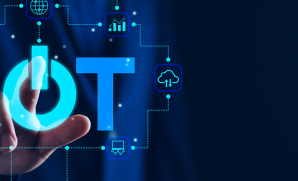How Multi-Access Computing (MEC) generates value in the Automotive ecosystem
Publish Date: August 1, 2022The promise of a connected world is real, inevitable, and increasingly getting realized in every aspect of our lives. From connected factories to connected office spaces, I have strived to cover the “world of connected” through my previous blogs, and today my focus is on ‘Connected vehicles.’
The increasing proliferation of the internet of things is gradually transitioning the conventional technology-driven automotive industry into data-driven models such as electric vehicles or self-driving cars. According to a Statista projection, over 400 million connected cars will operate by 2025, up from 237 million in 2021. That means every new vehicle will likely be connected, generating an enormous volume of real-time data. While harnessing the power of these data volumes presents a remarkable opportunity to make vehicles more efficient and roads safer, the real challenge lies in network capacity limitations. The current centralized data processing and delivery may not be adequate for achieving the desired amount of speed, security, and reliability. Multi-access edge computing (MEC) could probably answer this problem. In this blog, we explore the relevance of Multi-access edge computing (MEC) in today’s context and its contribution to the evolution of transportation into a ‘connected’ industry.
What is Multi-access edge computing?
Developed by the European Telecommunications Standards Institute (ETSI), Multi-access edge computing (MEC) (also known as mobile edge computing) is an evolution in cloud computing that uses mobility, cloud services, and computing capabilities to move traffic away from a centralized data center to the Edge of the network that lies closer to the customers. As the data is processed and stored at the network’s Edge and does not travel back and forth to a centralized data network, latency gets reduced significantly, making computing faster and more reliable. According to Grand View Research, the global edge computing market size is expected to reach USD 28.84 billion by 2025, with a CAGR of 54%.
Automakers can now manage this explosive volume of data generated from car sensors and actuators right at the end-user data source to improve transportation efficiency, advanced driving experience, and high-level vehicle management capabilities.
Why is Multi-access Edge Computing (MEC) relevant for the automotive sector?
Let us understand this with an example. Imagine a driver driving through a highway at 160 km/hr. And suddenly, his route is intercepted by a wild pig. The sensors in connected vehicles should detect the hazard instantly and engage the brakes to avoid a collision. The data flow from a typical IoT-connected centralized data center can be subject to channel hindrance, anomaly between the device and platform, or many other factors impacting the action’s latency and speed. Instead, suppose the data is processed at the Edge of the car in real-time. In that case, the latency is reduced significantly, enabling the brakes’ engagement instantly to avert the accident.
The rise in IoT deployments today, coupled with high-band 5G, is immensely increasing centralized cloud infrastructure’s load. The connected world is going through substantial evolutionary changes which demand low latency and higher speed, thereby driving up the demand for Edge computing. With the ability to fulfill the latency limitations and low bandwidth requirement, MEC today is most relevant and being effectively deployed across road infrastructure, air/seaports, and smart factories creating a new architecture of connectivity.
How does Multi-access Edge Computing (MEC) contribute to the automotive sector’s future?
The automotive sector’s future would be advanced autonomous vehicles equipped with multiple next-generation applications connected to a network. Unlike conventional cars, these new-age technologies require massive computing power to process the data flow to generate a real-time response. The computing power needs to be pushed to the network edges to substantially reduce latencies, operate on lower network bandwidth, increase the privacy of sensitive information, and even enable operations when networks are disrupted. The wide variety of use cases offered by Edge computing is well suited to address these requirements and contribute to a more safe and secure automotive future. Let us review some of these use cases.
Predictive analytics and maintenance
Nowadays, most cars on the road leverage IoT solutions to predict and prevent a potential anomaly and recommend maintenance. MEC aggregates all the sensor data in real-time to track every car parameter and alert the driver of any maintenance requirement. For example, the ambient temperature, mileage, tire inflation, braking, acceleration, and speed/force can all be monitored in real-time at the end-user location with sensors installed on car parts. It can even calculate the remaining service life of vehicle parts and the possible future repair needs.
Smart road infrastructure management
A cellular vehicle to everything (C-V2X) is an IoT network that connects a car with different aspects of road infrastructure. These data exchanges can range from vehicle to vehicle (V2V) sharing vehicle location, speed, and dynamics; vehicle to road infrastructure (V2I) such as traffic lights, toll booths, etc., and vehicle to pedestrians (V2P) such as city transits. With an edge device deployed in the network, all the data aggregation and exchanges can happen smoothly to manage an efficient and futuristic road infrastructure.
Smarter Fleet management
With IoT and edge computing, future fleet management will likely become smarter, cost-effective, and efficient. The IoT devices installed on a vehicle aggregates data such as speed, idling time, driver’s behavior, vehicle location, fuel consumption, load, and temperature monitoring. With edge computing deployed in the vehicle, the fleet manager can have real-time access to all the vehicle data easily. The machine learning data can be refined in the cloud and pushed to Edge with over-the-air updates.
Customizable digital cockpit solutions
A digital cockpit solution is a combination of a high-end In-Vehicle Infotainment system (such as a media player, UI display), digital instrument cluster (GPS), Heads-Up Display Unit (HUD unit for touchless commands), ADAS (Advanced Driver Assistance System) (Dash camera and deep vehicle sensors), and HVAC (Heating Ventilation and Air Conditioning) system. Driven by IoT, these components redefine user experience and have increasingly been the central focus of car purchasing decisions over the last decade.
With Edge computing, this in-vehicle user experience can be enhanced by personalizing the interaction design, whether a touch interface or voice recognition. Hosting the machine learning models on Edge devices makes it possible to analyze the sensors and, thereby, the user behavior data. This processed data is a gold mine to personalize in-vehicle user experience.
Building a transportation ecosystem of the future with MEC
Edge computing will be crucial to realizing the future of automation with connected and autonomous vehicles, safer roads, and an efficient traffic management system. The era of 5G has made edge computing even more compelling, enabling the routing of user traffic to the lowest latency edge nodes in a much more secure and efficient manner. This allows near-instantaneous response and data analytics, real-time insights, and enhanced decision-making.
However, MEC being at its evolutionary stage, it can be highly complex to design an edge computing ecosystem for autonomous vehicles that tightly integrate many technologies, including sensing, localization, perception, decision making, as well as the smooth interactions with cloud platforms for high-definition (HD) map generation and data storage. An industry leader in next-generation IoT applications, such as YASH Technologies, with a portfolio in IoT, Edge and cloud computing, and AI/Machine Learning, is well-positioned to understand these challenges and deliver best-fit solutions across the numerous edge-based requirements of the automotive industry.


















